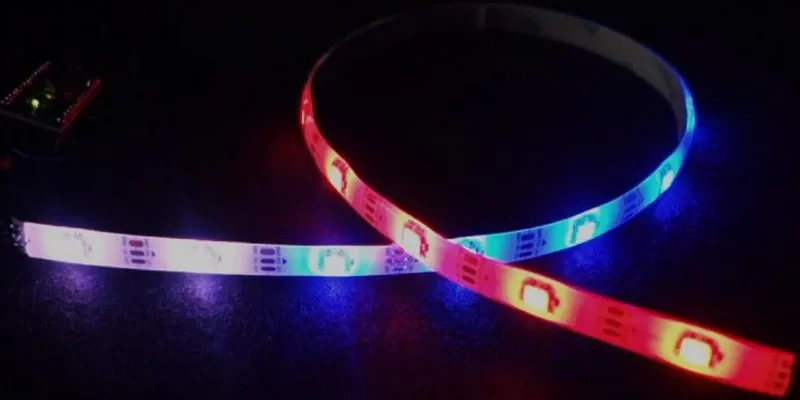In recent years, LED lighting has become an essential part of how we illuminate homes, businesses, and public spaces. Its versatility and energy efficiency make it a popular choice across many industries. But if you’ve ever explored LED lighting options, you might have come across terms like “LED strip lights” and “LED modules.” Understanding these components and how they’re made can help in choosing the right lighting solution for your needs.
What Are LED Strip Lights?
LED strip lights are flexible circuit boards embedded with tiny LED bulbs spaced evenly along their length. Because of their flexibility and ease of installation, these strips can be applied in various settings—from accent lighting under kitchen cabinets to creative architectural designs. They come in different colors and brightness levels, making them adaptable for mood lighting, task lighting, or decorative effects.
Quality in LED strip lights is defined by several factors: flexibility without breaking, consistent brightness, good heat dissipation, and protection against dust and moisture when needed. These factors ensure the strip lights perform well over time and don’t lose their glow prematurely.
How Are LED Strip Lights Manufactured?
When searching for a reliable led strip lights manufacturer, it’s important to consider their approach to quality and production methods. Manufacturing LED strip lights involves a detailed process focused on precision and durability. It starts with selecting the right type of flexible circuit board material, which provides the foundation. Small LED chips are carefully mounted on the board, connected by tiny circuits designed to supply consistent power.
A key aspect in the manufacturing process is ensuring that the strips can bend or twist without damaging the electronics. This involves careful layout design and the use of protective coatings. Some strips also come with waterproof layers, making them suitable for outdoor or humid environments.
Quality control during production tests brightness uniformity and ensures the strip’s electrical components meet safety standards. This attention to detail helps avoid common issues like flickering or uneven lighting after installation.
What Are LED Modules?
LED modules differ from strip lights in that they typically consist of a small board or housing with several LEDs arranged in a specific pattern. These modules are designed for more targeted lighting applications, such as backlighting signs, display lighting, or general illumination in confined spaces.
Because LED modules are usually more rigid and self-contained compared to strips, they offer a different set of advantages. Their design often includes integrated lenses or diffusers that help control light spread and intensity. This makes them useful in projects where precise lighting control is necessary.
How Are LED Modules Manufactured?
Finding a dependable led module manufacturer means looking closely at the materials and assembly techniques used. The manufacturing of LED modules involves assembling multiple components, including LED chips, circuit boards, connectors, and sometimes optical elements like lenses. The process requires accuracy to ensure the LEDs are positioned correctly for optimal light output.
Materials used in modules are chosen for durability and thermal management, as heat can significantly affect LED performance and lifespan. During production, modules undergo testing for brightness, color consistency, and electrical reliability to ensure they meet specifications.
A crucial part of LED module manufacturing is ensuring they can withstand environmental factors when used outdoors or in challenging conditions. This often involves sealing the module or using materials resistant to moisture and dust.
Matching LED Components to Your Needs
Choosing between LED strip lights and modules depends largely on the lighting goals of a project. If flexibility and easy installation around corners or curved surfaces are priorities, LED strip lights may be the better option. For applications requiring focused or directional lighting, LED modules can provide the necessary precision.
It’s also important to consider factors like operating environment, power consumption, and longevity. For instance, outdoor installations require weather-resistant products, while indoor decorative lighting might prioritize color options and dimming capabilities.
Understanding these aspects helps in selecting components that not only look good but also perform reliably over time, reducing maintenance efforts.
Sustainability and Innovation in LED Production
The LED lighting industry continues to evolve with a strong emphasis on sustainability. Manufacturers are developing LED components that consume less energy while delivering the same or better brightness. Advances in materials and design have also led to longer-lasting LEDs, reducing the frequency of replacements.
Innovation isn’t limited to efficiency; many manufacturers focus on creating products that minimize environmental impact during production and disposal. This shift benefits both users and the planet by promoting energy savings and reducing waste.
Final Thoughts
Whether it’s LED strip lights or modules, understanding the components and how they’re made can make a big difference in choosing the right lighting solution. Both types serve unique roles and come with specific features suited to various applications.
By paying attention to manufacturing quality and the intended use, it’s possible to select LED lighting components that offer reliable performance and meet the demands of modern lighting needs. With ongoing innovation and a growing focus on sustainability, LED lighting continues to be a smart choice for many environments.

Comments